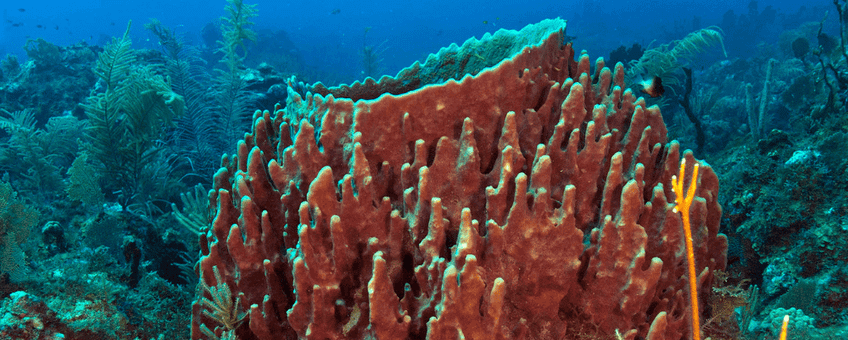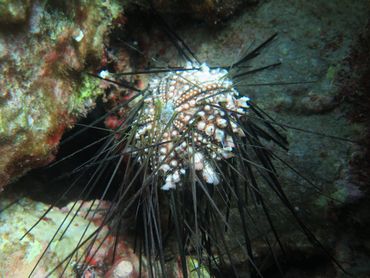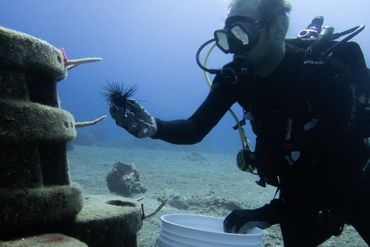
Seven-year mission to save Sint Eustatius' coral ecosystems
Dutch Caribbean Nature Alliance (DCNA), Reef Renewal Foundation Bonaire, Saba Conservation Foundation (SCF), STENAPA, Van Hall Larenstein The decrease of hard coral cover is attributed to the Caribbean-wide die-off of the sea urchin Diadema antillarum, a keystone herbivore. Without Diadema, corals struggle against algal competition, leading to a cascade effect that threatens the entire ecosystem. The consequences of this decline extend beyond biodiversity concerns, as it also directly impacts the local tourism and fishing industries and compromises the island's resilience to erosion during hurricanes.
The decrease of hard coral cover is attributed to the Caribbean-wide die-off of the sea urchin Diadema antillarum, a keystone herbivore. Without Diadema, corals struggle against algal competition, leading to a cascade effect that threatens the entire ecosystem. The consequences of this decline extend beyond biodiversity concerns, as it also directly impacts the local tourism and fishing industries and compromises the island's resilience to erosion during hurricanes.
New hope
Recognizing the urgency of intervention, a Nature and Environmental Policy Plan related project focuses on restoring the Diadema population. This includes implementing a strategic seven-year plan to reverse the decline in coral cover. The method involves collecting post-larval sea urchins, cultivating them in land-based facilities, and reintroducing them to the reef after six to eight months. The anticipated positive feedback loop involves the sea urchins creating a habitat conducive to coral recruitment, further attracting juvenile sea urchins. Project will be executed by the St. Eustatius National Parks Foundation in collaboration with University of Applied Sciences VHL, and Saba Conservation Foundation.

Two-phase approach
This project includes two different phases. Phase I (2023-2024) works to establish the Reef Restoration Unit, identify restoration sites, develop land-based Diadema culture facilities, and conduct initial surveys and assessments. Next, phase II (2025-2029) will involve scaling up the restoration program, evaluating and diversifying herbivorous species, exploring the potential for active coral restoration, and further refining the restoration strategy.
The overarching objective is to ensure healthy marine ecosystems that support both environmental and economic resilience for Sintt Eustatius. Specific objectives include restoring reefs, increasing hard coral cover, and identifying complementary herbivores.
As Sintt Eustatius embarks on this ambitious seven-year journey, the project's success promotes not only the rejuvenation of coral reefs but also the preservation of the island's economic and environmental well-being. Through strategic interventions and collaboration, Sintt Eustatius aims to reclaim its status as a guardian of vibrant and resilient marine ecosystems.
DCNA
The Dutch Caribbean Nature Alliance (DCNA) supports (science) communication and outreach in the Dutch Caribbean region by making nature related scientific information more widely available through amongst others the Dutch Caribbean Biodiversity Database, DCNA’s news platform BioNews and through the press. This article is about a project which is not a DCNA project. No rights can be derived from the content. DCNA is not liable for the content and the in(direct) impacts resulting from publishing this article.
Text: Dutch Caribbean Nature Alliance
Photos: Marion Haarsma (lead picture: Giant barrel sponge); Alwin Hylkema
